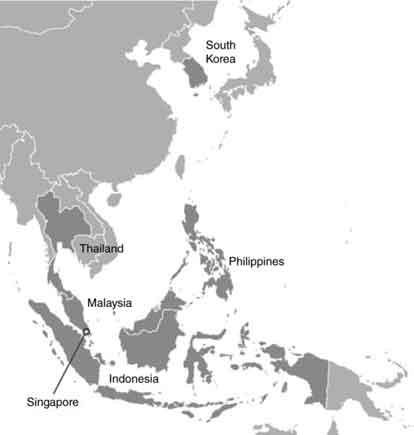CHAPTER 21
The Asian Contagion
The phenomenal rebuilding of Japan after World War II into the world’s second-largest economy is the stuff of business legend, and from the 1960s forward, Japan dominated the region as the richest and most powerful nation in Asia (at least until the turn of the millennium, when China had moved into the number 2 spot).
What was just as unexpected, however, was the ascendency of such countries as Singapore and Malaysia, which were third-world backwaters in the 1950s yet became some of the fastest-growing economies in the world. The Asian region, particularly the so-called “Asian Tigers,” enjoyed phenomenal growth for decades until it was suddenly and unexpectedly interrupted by a sweeping currency and financial crisis in 1997.
■ The Booming Decades
From the early 1960s through the 1990s, a number of countries in Asia exhibited astonishing growth and a collective transformation into some of the most dynamic economies in the world. Four in particular—Singapore, Taiwan, South Korea, and Hong Kong—were such standouts in their development as economic forces that they were dubbed the “Asian Tigers” (see Figure 21.1).
FIGURE 21.1 The Asian Tigers, highlighted here on a map of the region along with a few other rapidly growing economies.

Whereas most developed countries are content with a 2 percent or 3 percent annual growth rate, the Asian Tigers enjoyed ...
Get Panic, Prosperity, and Progress: Five Centuries of History and the Markets now with the O’Reilly learning platform.
O’Reilly members experience books, live events, courses curated by job role, and more from O’Reilly and nearly 200 top publishers.

